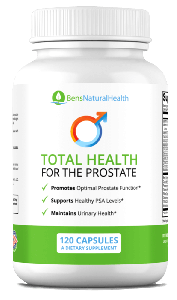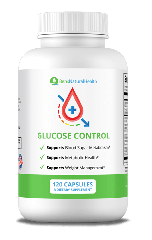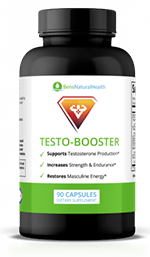If you’ve been wondering whether physical activity could ease the symptoms of prostatitis, you’re not alone. For over half a century, numerous studies have demonstrated how regular exercise can help lower the risk of stroke, heart disease, and certain types of cancer, including prostate cancer. It can also alleviate stiffness and joint pain linked to chronic conditions like arthritis.
But have you ever considered exercise specifically for prostatitis? We spoke with Dr. Letsa, who has provided extensive research and resources on prostatitis exercises, to explore how targeted physical activities might influence prostate health and pain management.
In this interview-style guide, you’ll find scientifically backed insights and practical tips, all thoroughly reviewed by a medical doctor to ensure accuracy and reliability.
Let’s dive in and hear directly from Dr. Letsa on how exercise can help manage prostatitis.
Q: How Can Exercise Help Prostatitis?
Dr. Letsa answers: Prostatitis is a more prevalent urologic disorder than people often realize. As the research shows, the overall prevalence of chronic prostatitis is roughly 4.5% to 9%, and recurrence rates can spike up to 50% in older individuals.
When we talk about using prostatitis exercises as a “turbo boost” for a healthy prostate, I’m referring to evidence that high levels of exercise might reduce the risk of chronic pelvic pain syndrome (CPPS) and chronic prostatitis in middle-aged and older men.
A good example is a randomized, double-blind study involving 231 male patients (aged 20 to 50) with chronic pelvic pain syndrome/chronic prostatitis who hadn’t responded to conventional treatment. These patients tried moderate-intensity exercise, and we saw that improvement in symptoms was significantly superior in the aerobic exercise group compared to those who only did placebo stretching. Not only did they manage better pain control, but their overall quality of life improved as well.
This shows that aerobic exercise, in particular, can be a valid treatment option for symptoms such as chronic pelvic pain.
Get Your FREE PSA Lowering Diet Plan!
- Naturally lower PSA levels
- Reduce nighttime trips to the bathroom
- Enjoy better bladder control and urine flow
Q: Is There Scientific Evidence Supporting Exercise for Prostatitis?
Dr. Letsa answers: Yes, there is growing evidence that exercise can alleviate prostatitis symptoms. Studies have shown that aerobic exercises, such as brisk walking or cycling, can significantly reduce pain, anxiety, and depression associated with chronic prostatitis.
For instance, a randomized controlled trial found that men engaging in aerobic exercise three times a week experienced more significant symptom relief than those performing non-aerobic exercises. Regular physical activity has also been shown to help treat various prostate-related conditions as it improves blood flow, reduces inflammation, and enhances overall prostate health.
Q: What Are the 6 Exercises That Are Good for Prostatitis?
Dr. Letsa answers: The prostate can sometimes feel like a thorn in your side. Prostatitis patients often experience a range of symptoms, including lower urinary tract issues such as urinary dribbling, nocturia (frequent nighttime urination), and poor urine flow. But prostatitis can also come with rectal pain, chronic pelvic pain, constipation, external genital pain, burning sensations, lower back pain, erectile dysfunction, and even premature ejaculation.
With a chronic condition like nonbacterial prostatitis or chronic bacterial prostatitis, quality of life can drop quickly. That’s why the right exercises can make a practical difference. Below are six exercises I often recommend to help manage prostatitis.
1. Kegel Exercises to Train and Fortify the Pelvic Floor
Kegel exercises strengthen the pelvic floor muscles. When these muscles are stronger, you can achieve better control over urination—something particularly useful if you’re dealing with urinary incontinence or recovering from prostate cancer treatments.
- How to do them: Tighten your pelvic floor muscles for about three seconds, then relax for another three. Repeat these prostatitis exercises several times in a row. Once you get used to the contractions, try doing them while walking, standing, or sitting.
2. Aerobic Workouts to Help Stool, Digestion, and Metabolism
Aerobic workouts—like running, swimming, or brisk walking—can be excellent for stimulating natural muscle contraction in the intestines. This helps move stool through the system more efficiently, combating constipation.
Moreover, the increase in heart rate and breathing that comes with aerobic exercise can support better digestion and overall metabolism. Such routines can complement standard prostate cancer treatment or potentially reduce the chances of prostate cancer development.
3. Yoga to Get Your Mental Health in Check
Prostatitis pain often goes hand in hand with depression, anxiety, and a diminished quality of life. That’s where yoga stands out. From easing symptoms of major depression to improving mood management, yoga can be incredibly beneficial if you’re coping with chronic pelvic pain syndrome or bladder problems.
Yoga also helps reduce inflammation, improves flexibility, and may enhance overall mobility—a welcome relief for many patients.
4. Moderate Calisthenics to Target Muscle Weakness
Certain muscle groups might weaken when you’re dealing with nonbacterial or bacterial prostatitis. Prostatitis exercises that rely on your own body weight, like calisthenics, can help you regain strength.
- Examples: Squats to strengthen the pelvic floor, planks for the core, and push-ups to build upper body and abdominal endurance. These exercises can be adapted to your fitness level and done almost anywhere.
5. Coordination Exercises to Work on Your Balance
Balance and coordination tend to decline with age, but they can also be affected by chronic pelvic pain and other prostatitis symptoms. Incorporating exercises to improve balance—two or three sessions a week for about eight weeks—may make a substantial difference in your daily life. Always check with a doctor or personal trainer to see which coordination exercises might best fit your needs.
6. Pelvic Floor Physical Therapy to Restore Pelvic Floor Function
Sometimes, a single exercise won’t be enough to handle the array of symptoms tied to prostatitis—especially in chronic or severe cases, or after certain cancer treatments. That’s where pelvic floor physical therapy comes in.
A doctor or physical therapist will create a personalized treatment plan that may include coordination exercises, relaxation techniques, and stretches for shortened pelvic muscles. The overall aim is to restore normal pelvic floor functioning, helping you gain better control and reduce discomfort.
Key FAQs on Prostatitis Exercises
Q: Can dietary changes enhance the effects of exercise for prostatitis?
Dr. Letsa answers: A balanced diet including anti-inflammatory foods can enhance the benefits of exercise. There are several ways in which nutrition affects prostatitis. Foods such as tomatoes (which are rich in lycopene), cruciferous vegetables, and omega-3 fatty acids from fish can help reduce inflammation and support prostate health.
It is also important to avoid irritants like caffeine, alcohol, and spicy foods. By making these dietary adjustments, you can improve the positive effects of physical activity on prostatitis symptoms.
Q: How soon can I expect to notice improvements in my prostatitis symptoms once I start exercising?
Dr. Letsa answers: The timeline for noticeable improvements varies. Studies suggest consistent aerobic exercise, such as brisk walking or cycling, can lead to significant symptom relief within 6 to 18 weeks. Patience and consistency are key, as the benefits of exercise accumulate over time.
Q: Can I combine multiple prostate exercise types (like Kegels and yoga) in one routine?
Dr. Letsa answers: Yes, combining different types of exercises can be highly beneficial. Kegel exercises strengthen the pelvic floor muscles, while yoga promotes relaxation and reduces pelvic tension. A varied exercise routine can address multiple aspects of prostate health, from improving urinary control to alleviating chronic pelvic pain.
Q: Should I consult a specialist before starting a new prostate exercise program?
Dr. Letsa answers: Consulting a doctor is always a good idea, especially if you have underlying health conditions or are new to exercise. A healthcare provider can tailor an exercise plan to your needs and ensure safety. For instance, a physical therapist specializing in pelvic health can guide you on proper techniques for Kegels or other targeted exercises.
Q: Are there any specific warning signs to watch out for when starting an exercise program for prostatitis?
Dr. Letsa answers: A balanced exercise routine that incorporates at least 30 minutes of physical activity on most days of the week provides significant health benefits. While exercise is generally safe, certain warning signs should not be ignored. These include increased pain, urinary retention, or blood in the urine. If you experience these symptoms, stop exercising and consult your healthcare provider immediately.
Q: Are squats bad for prostatitis?
Dr. Letsa answers: On the contrary, squats can be beneficial for prostatitis when done correctly. They can effectively reduce the pressure on the prostate, improve blood circulation in the pelvic region, reduce congestion, and strengthen the lower body. However, it’s essential to maintain proper form to avoid strain or injury.
Conclusion
Prostatitis can significantly impact your well-being. The pain, along with a mix of other symptoms, can be overwhelming. The good news is that exercise offers a natural way to give your body and muscles a healthy boost.
Whether it’s Kegels, aerobic workouts, yoga, calisthenics, balance prostate exercises, or a structured pelvic floor physical therapy program, movement can help you reclaim some control over your health. Always remember to discuss your exercise plans with a healthcare professional, especially if you have underlying conditions or concerns.
Our Medical Review Process
At Ben’s Natural Health, we prioritize transparency, accuracy, and scientific integrity. Every article is meticulously developed by medical professionals and undergoes a thorough review every 12 to 24 months. This ensures that our content remains accurate, up-to-date, and rooted in credible, evidence-based research. We rely solely on peer-reviewed studies from reputable medical journals, providing full citations and direct links to enhance trust and confidence. Learn more about our rigorous medical review process and research standards.
Our Editorial Guidelines
For over 25 years, Ben’s Natural Health has been a trusted source of scientifically backed information on natural health. Our editorial guidelines uphold the highest standards of quality and integrity. Each article is authored by qualified professionals—including doctors, dietitians, nutritionists, fitness experts, and surgeons—and undergoes independent quality checks. We believe in full transparency, displaying the credentials and biographies of our contributors at the beginning of every article. Read our editorial guidelines to understand how we create, review, and fact-check our content.
Medical Disclaimer
The information provided on this blog is for educational purposes only and should not be considered a substitute for professional medical advice, diagnosis, or treatment. While our content is written and reviewed by licensed medical professionals, it may not address your specific health concerns. Always consult your physician or a qualified healthcare provider before making any health-related decisions. Never ignore or delay seeking professional medical advice based on information found here. Your use of this blog and its content is entirely at your own discretion and risk.







